Kyoto is the perfect base for exploring some of Japan’s most incredible destinations.
During my trip to Japan, I used Kyoto as my base to visit beautiful temples, historic castles, and charming countryside villages—all within a short train ride. These day trips were some of the most memorable parts of my journey.
Traveling between these places is straightforward thanks to Japan’s efficient train network and the flexibility of Japan Rail Passes. Whether you want to see the deer roaming freely in Nara, walk through Arashiyama’s iconic bamboo forest, or visit the iconic Himeji Castle, every place is within reach.
In this guide, I’ll share my favorite day trips from Kyoto. For each destination, I’ve included helpful tips on how to get there and what to see, making your planning stress-free. If you want to experience the best of Japan beyond Kyoto, these day trips are the perfect addition to your itinerary.
Let’s explore together—you won’t regret it!
✏️ Post content
1. Nara
Nara is home to Japan’s largest bronze Buddha statue at Todai-ji Temple, a UNESCO World Heritage Site.
The temple is surrounded by Nara Park, where you can interact with hundreds of free-roaming deer that bow for treats. But be careful! They were chasing me everywhere and trying to bite my shirt to get me to give them food.
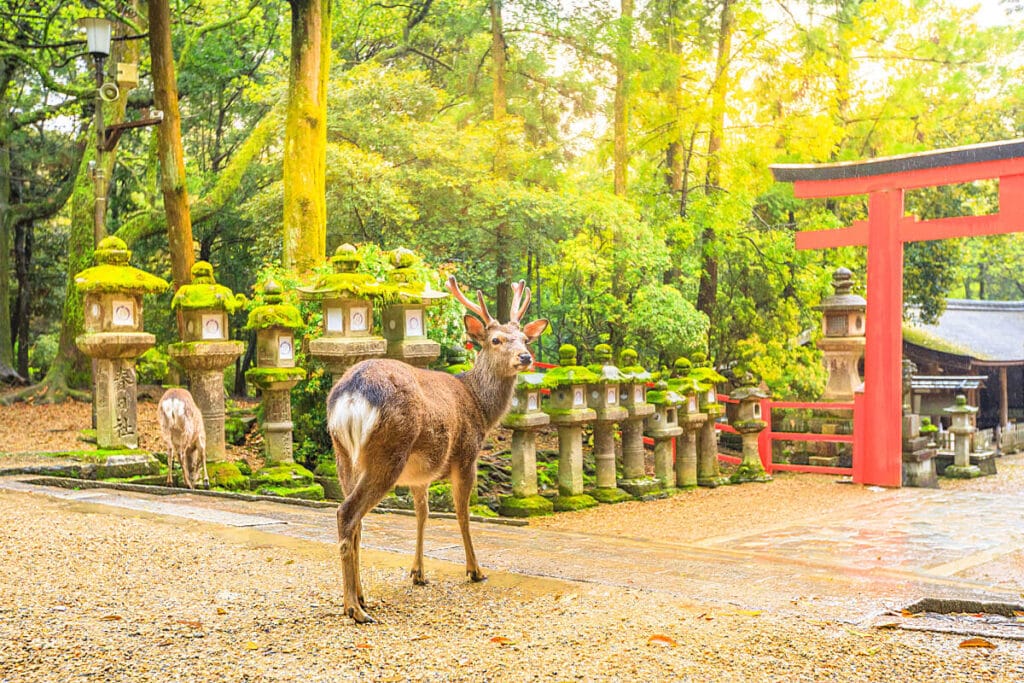
Did you know that the deer in Nara are considered messengers of the gods in the Shinto religion and have lived in the park for over 1,300 years?
Don’t miss Kasuga-taisha Shrine, known for its stone and bronze lanterns, or the tranquil Isuien Garden, offering views of Todai-ji’s rooftops.
Nara is famous for kakinoha sushi, wrapped in persimmon leaves, and miwa somen, thin, hand-pulled noodles served cold.
If you’re a fan of traditional Japanese flavors, don’t miss my favorite, miso soup, one of Japan’s most beloved dishes. It’s the perfect comfort food and an essential part of any Japanese meal.
For something sweet, try the local mochi from vendors who prepare it fresh in a curious (and quick!) pounding process.
How to Get There: Take the JR Nara Line from Kyoto Station to Nara Station. The journey takes about 45 minutes. Check the train schedules and prices on the 12Go website.
2. Uji
Uji is a must-visit for tea lovers and history buffs alike. The iconic Byōdō-in Temple, with its Phoenix Hall, is so renowned it’s depicted on Japan’s 10-yen coin.
Walk along the Uji River, cross the historic Uji Bridge, and explore the Uji Tea Museum to learn about Japan’s tea culture.
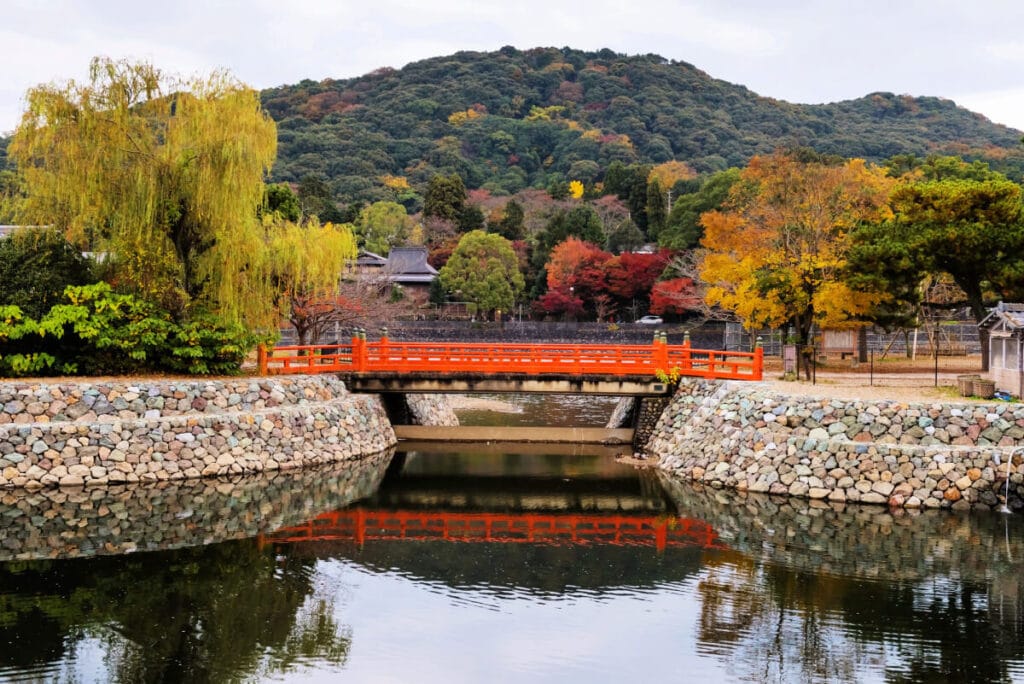
Uji’s tea is world-famous, so don’t miss trying matcha in every form—tea, soba noodles, parfaits, or desserts. For a more traditional experience, sip freshly brewed tea with seasonal wagashi (Japanese sweets).
Did you know that Uji is believed to be the birthplace of matcha, and its tea production dates back to the 12th century?
How to Get There: Take the JR Nara Line from Kyoto Station to Uji Station. The journey takes about 20 minutes. Check the train schedules and prices here.
3. Arashiyama
A short train ride away, Arashiyama is famous for its bamboo forest, where you can walk along serene pathways surrounded by towering green stalks.
Did you know that the bamboo forest in Arashiyama is one of Japan’s most photographed spots and has been used as a setting in many Japanese films?
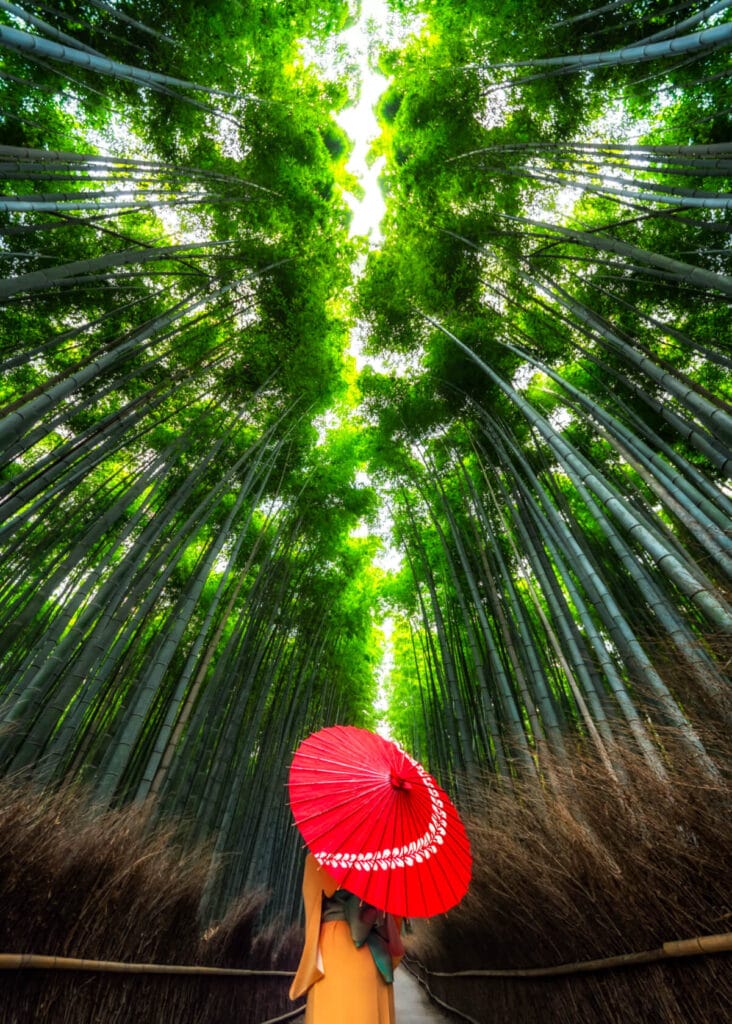
Visit Tenryū-ji Temple, a Zen Buddhist site with stunning gardens, and cross the Togetsukyō Bridge, which offers beautiful river views.
For a unique experience, hike up to the Monkey Park Iwatayama, home to wild macaques and panoramic views.
Arashiyama’s specialty is yudofu, a hot tofu dish prepared in a light broth. Enjoy seasonal sweets like sakura mochi, and explore street food options such as grilled dango (rice dumplings) and sweet potato chips.
How to Get There: Take the JR Sagano Line to Saga-Arashiyama Station. The journey takes about 15 minutes. Check the train schedules and prices here.
4. Osaka
Osaka is a mix of modern attractions and historical landmarks. Visit Osaka Castle, one of my favorites, which played an important role in Japan’s unification, and explore the nearby Osaka Museum of History.
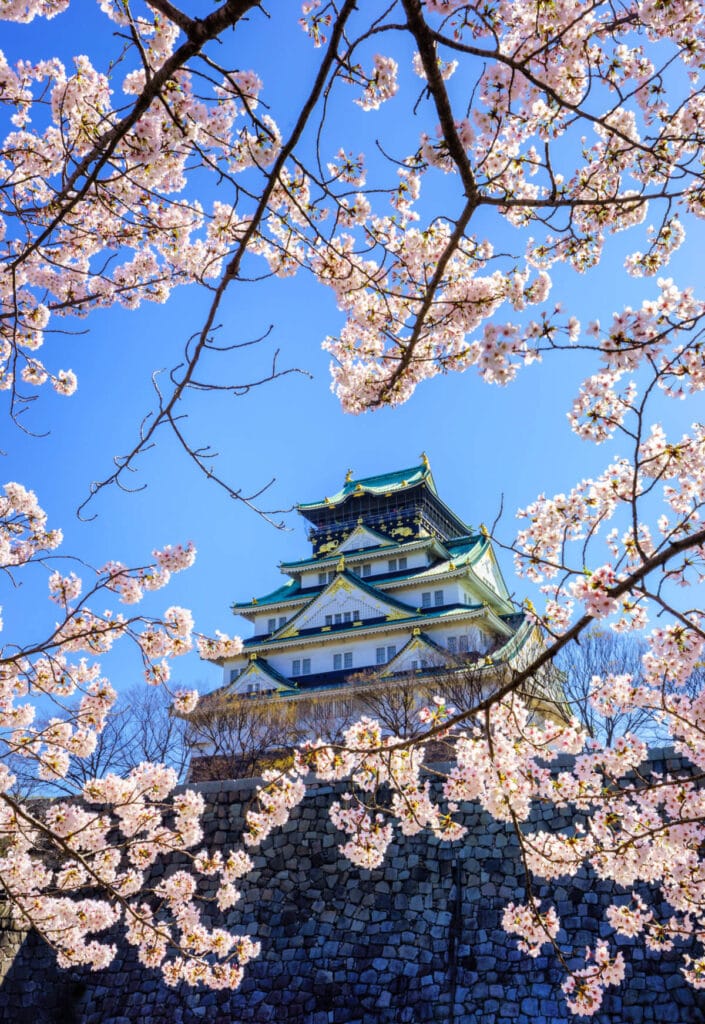
Spend time at Dotonbori, famous for its neon signs and lively atmosphere, or head to Kuromon Ichiba Market to eat fresh seafood and street food.
Osaka is celebrated as the “kitchen of Japan” and is famous for takoyaki (octopus balls) and okonomiyaki (savory pancakes). Try kushikatsu (deep-fried skewers) or head to a teppanyaki restaurant for a personalized dining experience.
Did you know that Osaka has been a hub for trade and food culture since the Edo period, making it a foodie’s paradise?
How to Get There: Take the JR Tokaido Line or a Shinkansen from Kyoto Station to Osaka Station. The journey takes about 15–30 minutes. Check the train schedules and prices here.
5. Himeji
The highlight of Himeji is the iconic Himeji Castle, often referred to as the “White Heron Castle” for its white facade.
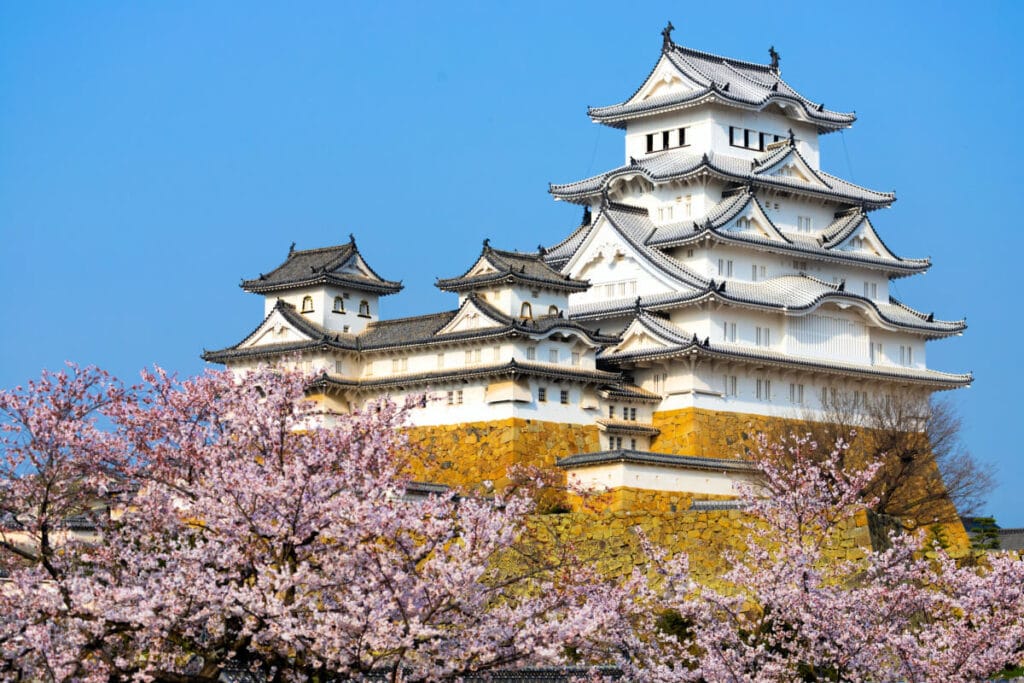
It’s widely regarded as the best-preserved castle in Japan. You’ll be surprised! Nearby, the Koko-en Garden offers beautiful views and a peaceful retreat.
Did you know that Himeji Castle has survived wars, earthquakes, and fires, earning its status as a UNESCO World Heritage Site?
Try Himeji oden, a type of hot pot, or anago-meshi, grilled sea eel served over rice (this one was so tasty!). For a sweet treat, enjoy local sake manju (steamed buns filled with red bean paste).
How to Get There: Take the Shinkansen from Kyoto Station to Himeji Station. The journey takes about 1 hour. Check the train schedules and prices here.
6. Kurama and Kibune
Visit Kurama-dera Temple, perched on a hill with scenic views, and hike through the forested path to Kibune Shrine, which is famous for its picturesque lantern-lined staircase.
The area is also known for its hot springs, perfect for unwinding after your hike, but I didn’t have time for that. I will have to go back!
In summer, enjoy kawadoko dining, where meals are served on platforms over a river. Try local specialties like yuba (tofu skin) and fresh mountain vegetables.
Did you know the Kurama area is said to be the birthplace of reiki, a Japanese energy healing practice?
How to Get There: Take the Eizan Electric Railway from Demachiyanagi Station to Kurama Station. The journey takes about 30 minutes. Check the train schedules and prices here.
7. Hiroshima
Hiroshima is a city with a deep history and a powerful story to tell. Begin at the Peace Memorial Park, a space dedicated to remembering the victims of the atomic bombing in 1945.
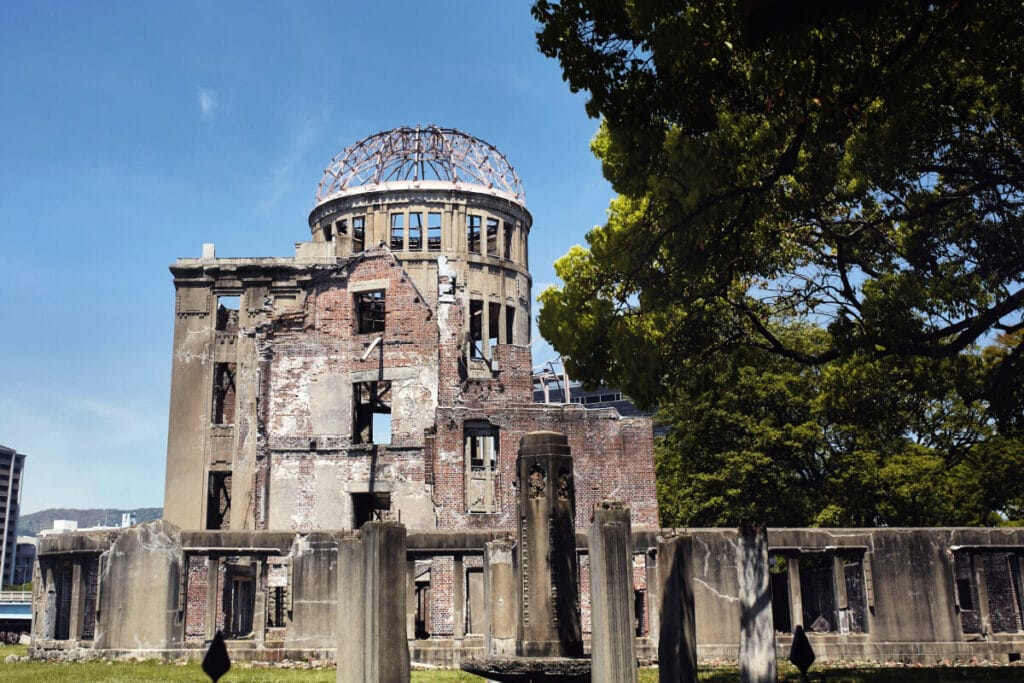
The Peace Memorial Museum offers a moving and educational look into the events of that day and their aftermath. The Atomic Bomb Dome, preserved as a symbol of peace, stands nearby and is a poignant reminder of the past.
After exploring the city center, take a ferry to Miyajima Island, famous for the “floating” torii gate of Itsukushima Shrine.
Depending on the tide, you can walk up to the gate or see it seemingly suspended above the water. The island is also home to scenic hiking trails and breathtaking views from Mount Misen.
Hiroshima-style okonomiyaki is a local favorite (and I loved it!), made with layers of batter, cabbage, noodles, and your choice of toppings. Pair it with the region’s fresh oysters, which are especially delicious in Winter.
Try momiji manju, maple leaf-shaped cakes filled with red bean paste, or other flavors like custard and chocolate for a sweet treat.
Did you know Miyajima Island has been considered sacred for centuries, and until recently, commoners were forbidden from setting foot on the island overnight?
How to Get There: Take the Shinkansen from Kyoto Station to Hiroshima Station, a journey of about 2 hours. To reach Miyajima, transfer to the JR Sanyo Line to Miyajimaguchi Station and take a short ferry ride. Check the train schedules and prices here.
8. Kobe
Kobe, a cosmopolitan city with a rich history, offers a mix of modern attractions and cultural landmarks. I started my visit at Kobe Harborland, a waterfront area filled with shopping, dining, and views of the iconic Kobe Port Tower.
For history enthusiasts, Ikuta Shrine, one of Japan’s oldest Shinto shrines, provides a peaceful retreat in the city’s heart.
Head to Mount Rokko for stunning views of Kobe, the bay, and even Osaka on clear days. The Rokko Cable Car takes you up the mountain, where you can enjoy the Rokko Garden Terrace and other attractions like the Rokko Alpine Botanical Garden.
Kobe is world-famous for its Kobe beef, which is known for its marbling and tenderness. Enjoy it as steak, teppanyaki, or even in a burger! Other local specialties include sake, which is brewed in the Nada district, and sweet treats like sake-flavored ice cream and castella cake.
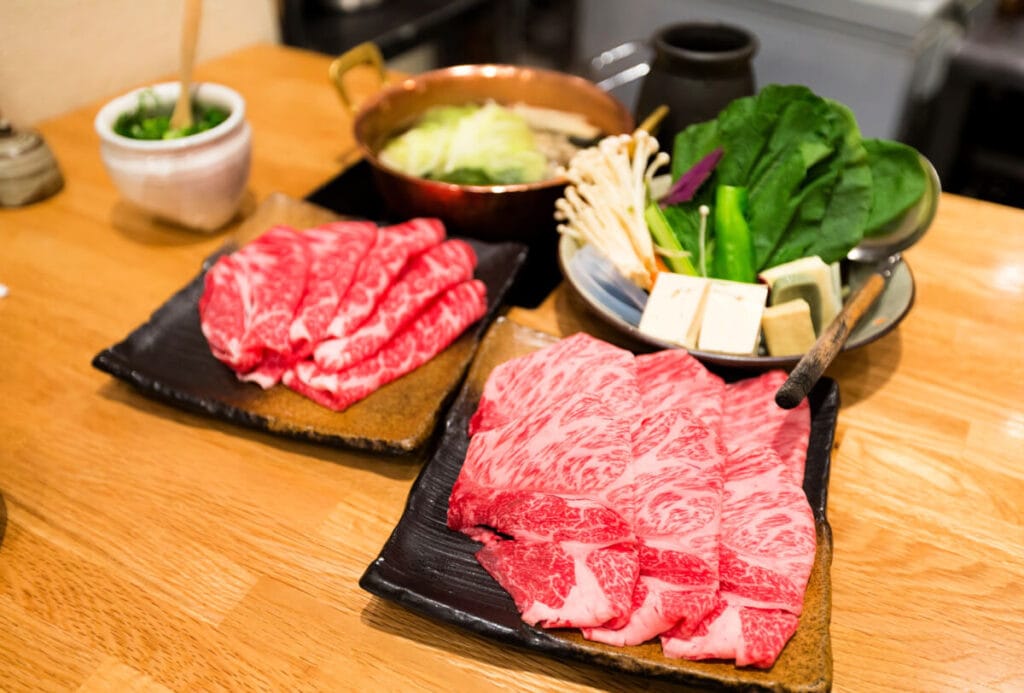
Did you know that Kobe was one of the first cities in Japan to open its ports to foreign trade in the 19th century?
How to Get There: Take the JR Tokaido Line or a Shinkansen from Kyoto Station to Kobe Station, a 50-minute trip. Check the train schedules and prices here.
9. Lake Biwa (Otsu)
Lake Biwa, Japan’s largest freshwater lake, is a natural retreat just outside Kyoto.
In Otsu, visit Miidera Temple, one of Japan’s four largest temples, with a history that dates back over 1,000 years! Stroll along the lake’s shore or take a sightseeing cruise to enjoy panoramic views of the water and surrounding mountains.
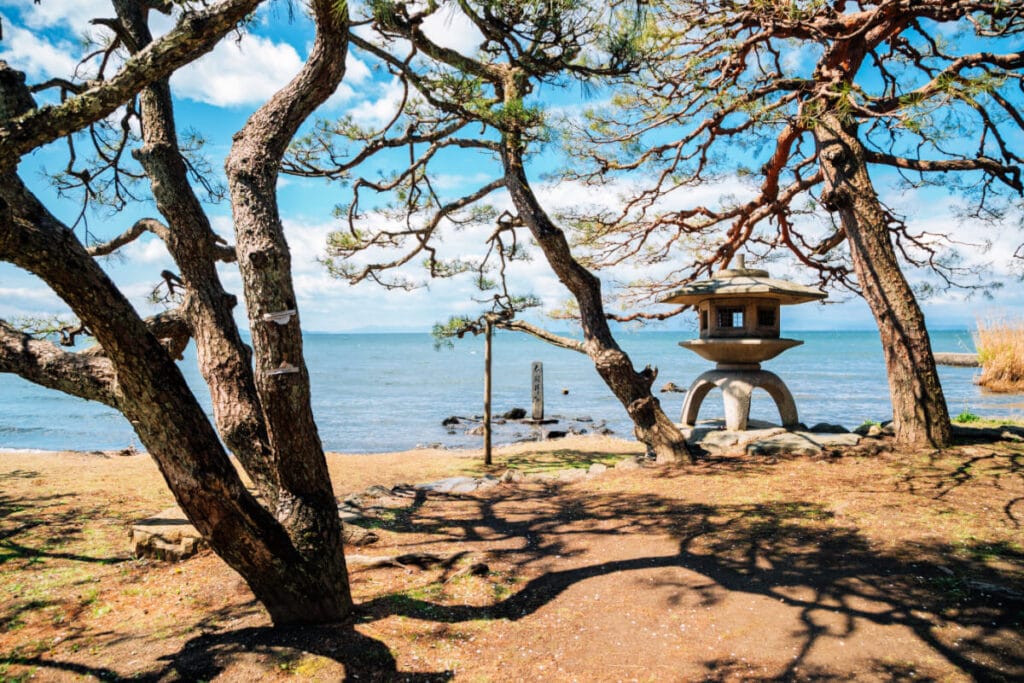
For those looking for more adventure, try kayaking, paddleboarding, or cycling along the lake. Nearby, the Biwako Valley offers a ropeway ride with lovely views and activities like skiing in winter and hiking in summer.
Local delicacies include funazushi, a fermented fish dish with a distinct flavor, and Biwa trout, often grilled or served as sashimi.
Did you know that Lake Biwa is believed to be over 4 million years old, making it one of the world’s oldest lakes and home to unique species of plants and animals found nowhere else?
How to Get There: Take the JR Biwako Line to Otsu Station, just a 15-minute ride from Kyoto. Check the train schedules and prices here.
10. Nagahama
Nagahama is a beautiful town on the northern shore of Lake Biwa. My advice is to begin your visit at Nagahama Castle Historical Museum, where you can learn about the area’s history and enjoy views of the lake from the castle’s observation deck.
Did you know that Nagahama Castle was originally built by Toyotomi Hideyoshi, one of Japan’s most famous warlords, as a symbol of his rise to power?
Wander through Kurokabe Square, a district filled with glass workshops, art galleries, and unique shops.
Nature lovers can explore Keisoku-ji Temple, famous for its stunning maple trees in autumn.
Nagahama is known for yaki-saba sushi, grilled mackerel sushi, and ayu, a sweetfish often served grilled during summer. I had it with local sake brewed from the pure waters of the lake.
How to Get There: Take the JR Hokuriku Line from Kyoto Station to Nagahama Station, a journey of about 1 hour. Check the train schedules and prices here.
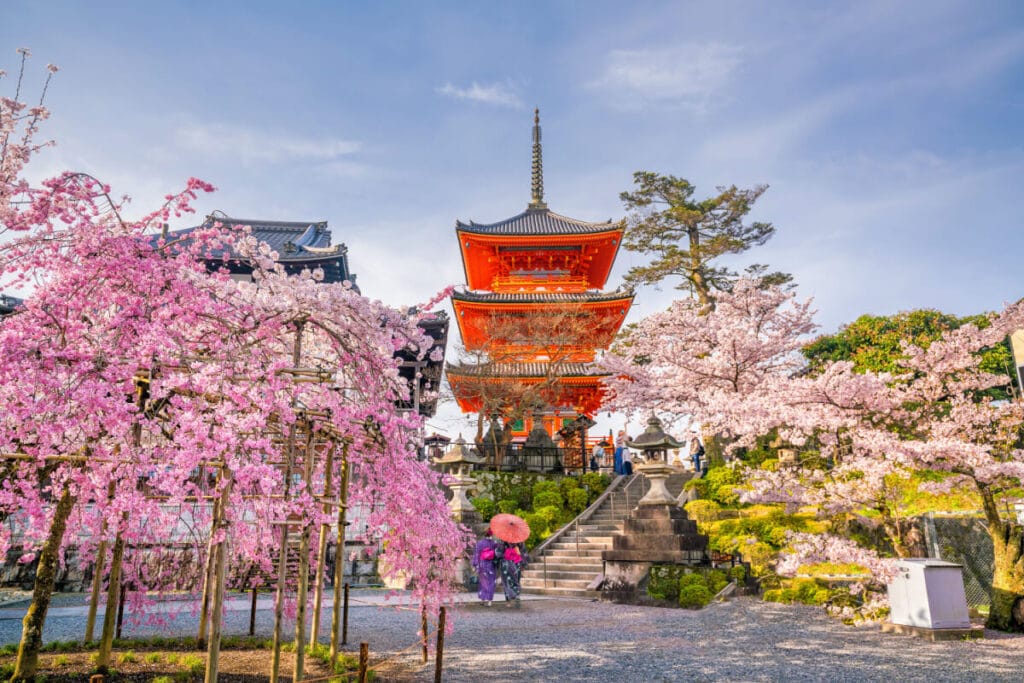
Day trips from Kyoto offer an incredible way to discover more of Japan’s culture, history, and landscapes.
Traveling with Japan Rail Passes as I did makes it all the more convenient, so you can focus on enjoying these moments without worrying about logistics.
As you plan your trip, I hope this guide helps you add new and exciting experiences to your Japan itinerary!
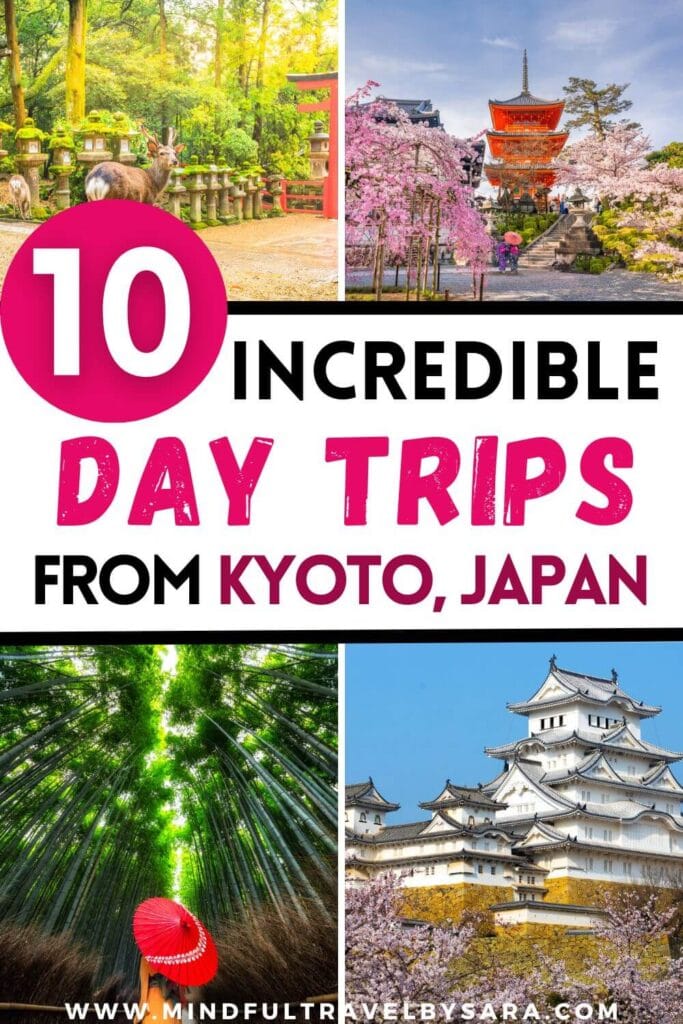

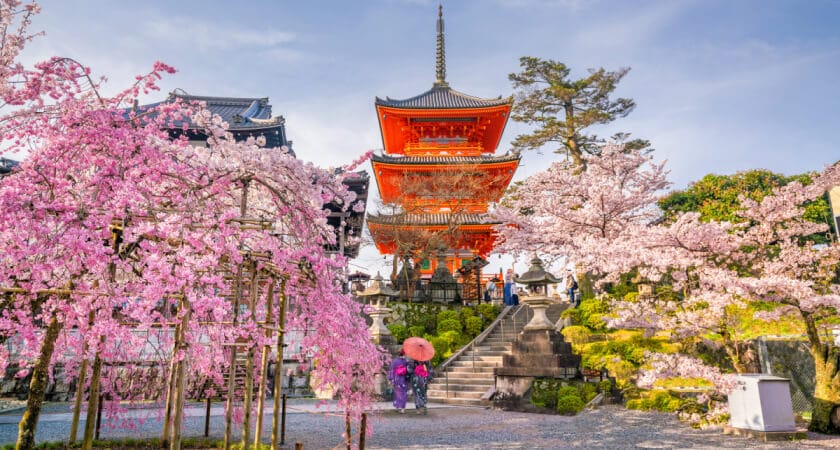









Leave a Reply